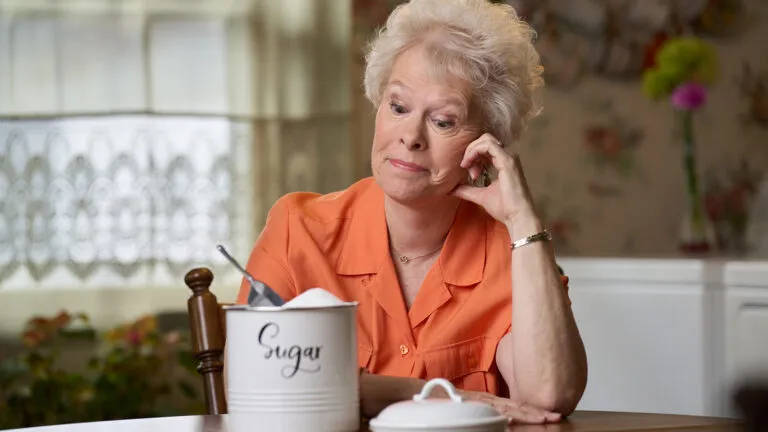Understanding the value of “good” nutrition—especially as we age—can get a little tricky. Unlike your “diet” which encompasses all the lifestyle choices that affect your health, from eating to exercising and sleep, “nutrition” is concerned with the kind of fuel you put into your body.
In simple terms, it’s the science of how the body breaks down food and converts it to energy.
It’s important to understand the difference because, while “eating healthy” is a relatively subjective notion—and what’s healthy for one person may not be healthy for another—nutrition is a universal language. Everyone, no matter their age, should be concerned with the food they’re eating and how that food is benefitting (or harming) them.
Guideposts.org chatted with Lauri Wright, a licensed nutritionist and spokesperson for the Academy of Nutrition and Dietetics to better understand nutrition and why it’s so important the older you get. Here are seven facts she wants you to know.
Fact #1: Food Is Energy
It’s easy to view food as the enemy, especially when you’re trying to lose weight or eat healthier. Words like “fat” and “carbs” can scare anyone committed to dieting, but Wright says instead of viewing food as an adversary, look at it as the gas that keep your engine running.
“It provides the energy for the body to do its work,” Wright tells Guideposts.org. “That’s anything from getting up and walking across the room, cooking dinner, or walking your dog; those type of volunteer activities.”
Wright said the body needs a “constant amount of energy” to continue doing the basic processes to sustain life, such as “your heart beating, your brain making decisions, the blood traveling.”
Fact #2: Carbs Are the Best Form of Energy
Contrary to what many fad diets would have us believe, carbs are actually good for us. So many people steer clear of carbs because they equate them with weight gain. Wright says it’s about moderation and getting the “right kind” of carbs in your diet because, as it turns out, they’re the best energy-provider.
“The best form of energy for the body, what the body was designed to run on, are carbohydrates,” Wright explains. “Those are your breads, your cereals, rice, pasta, fruits [and] vegetables. Those all contain carbohydrates and more of the complex carbohydrates.”
Wright said carbohydrates provide energy that stays with the body for hours, unlike protein and fat.
“If your car is designed to use high octane unleaded gasoline, in a pinch, you can use the low octane, but your car’s not going to work as well,” Wright said. “That’s exactly what our body’s like. We can use protein and fat in a pinch, but it’s not going to work as well as if we used the carbohydrates.”
Fact #3: Protein Serves a Purpose—Especially as We Age
Speaking of protein, Wright says that it has a very important job to do for our bodies, especially as we rack up the years.
“We need it for our immune system to help fight off infections. We need it to build the blood vessels, the blood cells that carry oxygen,” she said. “Also, not eating enough protein can go hand in hand with wasting the muscle of the body. We need protein for the muscles.”
Wright said that protein maintains the muscles as we age, protecting it from the muscles wasting that occurs—particularly with seniors—from a lack of activity or not using the muscles as much.
“Protein is critical and very critical in seniors,” she continues. “I always talk about making sure you have a good protein source at each meal. When you have it spread out, for example, three times a day at least 20 grams [for] breakfast, lunch, and dinner, it helps prevent that muscle wasting versus not eating any protein all day long [and] then just eating it at dinner time.”
Fact #4: You’re Probably Eating Too Much Salt
Salt is not necessarily a bad thing when it comes to food, but Wright says Americans are notorious for eating too much of it. What’s worse, many of us don’t realize how high in sodium our diets actually are.
“On average, the typical American gets about four to five times the recommended amount of sodium,” Wright reveals. “That can be an issue for high blood pressure. It can also be an issue for people that have heart failure. Overall, our goal is to reduce the sodium in our diet.”
Of course, that’s easier said than done.
“People get a taste for salt. It’s hard to back away from it,” Wright acknowledges. “I always recommend one of the first things is use a salt alternative. Mrs. Dash for example is a great way to do a salt alternative that adds a lot of flavor without that sodium.”
Wright also suggests people start with not adding salt when cooking because it still gets into canned food and some of our preserved food.
“You can get a lot without even realizing it,” she said. “It is a good step for all of us to find alternatives to flavor our foods with something that doesn’t contain sodium.”
Fact #5: Flavor Is Key
Wright says that many of her older patients, even her own father, struggle with their sense of taste as they age. As a result, older adults tend to eat less frequently or not at all, meaning they aren’t meeting their nutrition requirements. There’s a simple fix for that: herbs and spices.
Wright recommends growing a fresh herb garden in the kitchen and snipping off bits of basil or rosemary as needed, or simply buying prepackaged herbs and spices at your local grocery store.
Fact #6: Reading Labels
Nutrition labels are on everything these days but reading them is still a problem for many people. With ingredients too complicated to pronounce and percentages that don’t seem to add up, it can get confusing trying to discern exactly what’s in the food you’re eating. Wright has some tricks to make things simpler.
“I always like people to start with what is the portion and what are the calories?” Wright explains. “Then, look at some of the first things listed, these are what to avoid. They have the saturated fat, the trans-fat, and the sodium. You’re looking for lower levels of those. Then, as you scan farther down, what to include. You’re looking for those percentages of vitamins and minerals that are listed.”
As far as actual ingredients, there’s an easy way to figure out what your meal is made of.
“[The ingredient list] is in descending order by weight,” Wright says. “Really, the first five ingredients are probably what the product has the most of. By the time you get to some of the things put in there to preserve it, so it doesn’t spoil, that’s farther down. There’s not much in there.”
Fact #7: Food Is Meant to Be Enjoyed
According to Wright, the biggest lesson she wishes she could impart on all of her patients is that food should be enjoyed. Loving what you eat, looking forward to healthy mealtime, that’s the best way to get the most bang for your buck, nutrition-wise.
“I think nutrition is the sustenance of life,” Wright explains. “We want to have a good relationship with our food. It shouldn’t be about don’t do this, don’t do that. It shouldn’t be about restriction and rules. Instead, it should be about enjoying the flavor and having a good relationship with food.”





